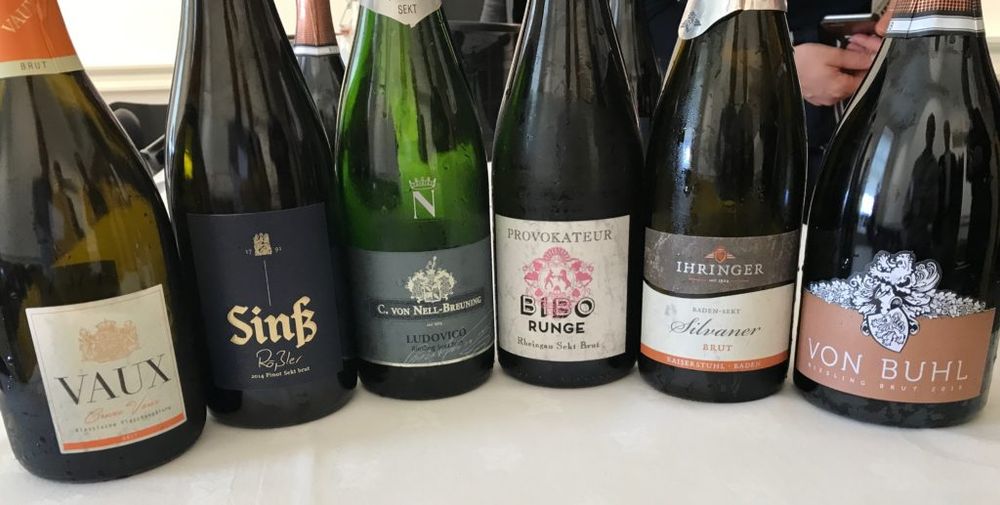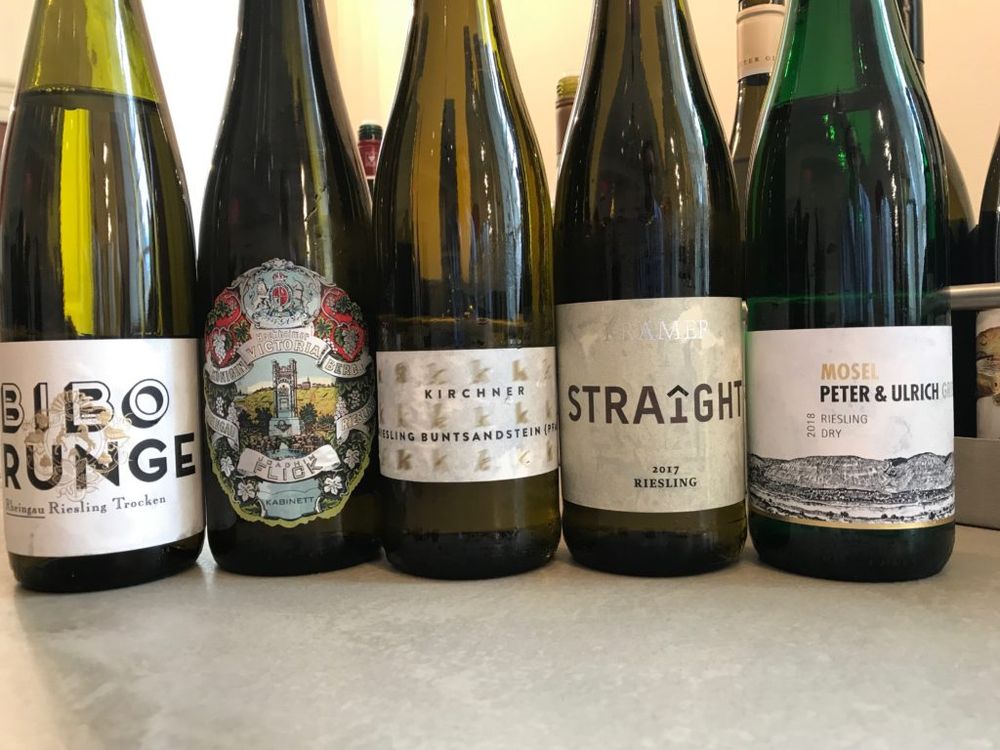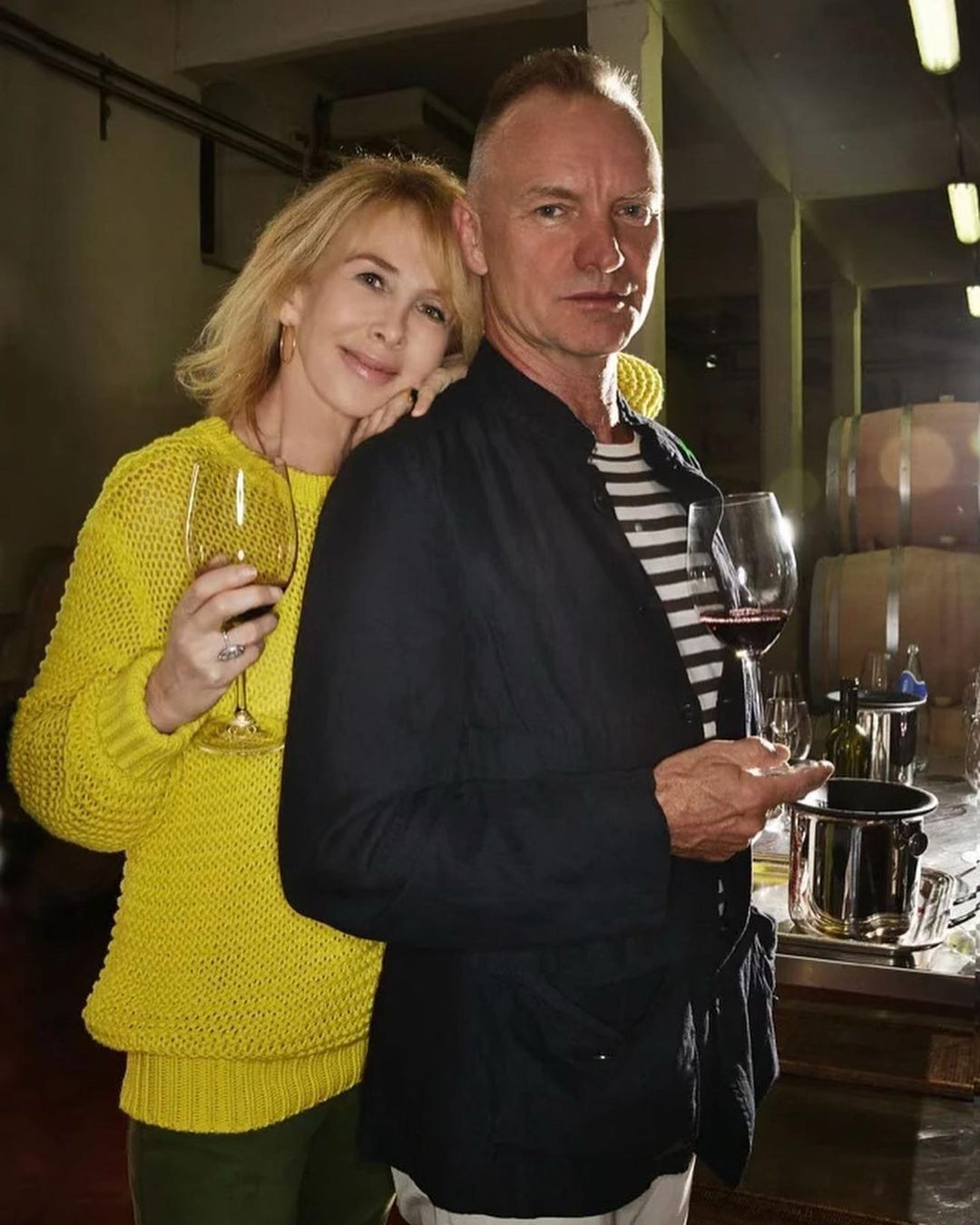With a Sekt Bar and Sekt Education, The Big G managed to focus on the opportunities there are in the UK with premium Sekt.
Hats off to the people who organise wine tastings. I mean it’s not easy – choosing the wines, winemakers, categories, venue, who to invite (all within a client’s set budget, that invariably will creak at the seams) and ensuring that when wine buyers and press taste their way through the wines on offer the wines are showing well and it’s bouquets they reach for and not brickbats
Add into this already onerous task the fact that there will probably need to be one every year…. Organising an annual generic tasting is going up a hill of an even steeper gradient. The choice is either go to the same venue, same time, so that people can find their way round with their eyes shut – this suits wines like claret where one of the prerequisites must surely be that there is nothing much to prove beyond the price hike – or do something completely different.

Somerset House, London, May 2, 2019. Spot The Big G Mondrian colourways in the windows – nice touch!
Into the latter category put Wines of California and Wines of Germany two generic wine bodies who have both been challenging perceptions by changing the criteria of their events, their look and yet retaining their brand values.
Two years ago Wines of Germany had Get It On, their annual tasting at Hospital Club, London which was clean, clinical but not very efficient, it was almost impossible to work your way round the self-pour selection; last year the event was called G-String and the venue was Vinyl Factory in Soho which was very hip, similarly well attended but challenged perceptions more, particularly in the Germany’s Coolest Wines section where we had access to Liebfraumilch of all things.
This year’s event, was called the Big G and held last Thursday at Somerset House. The event was halfway between the previous two years – clean, clinical, arty but with enough room to move your elbows round the Riesling. And there were fewer beards.

Brilliant idea! Enomatics solving the self-pour problems.
In line with the Wines of Germany brand values – innovation was everywhere to be seen, particularly with the introduction of Enomatic machines for the 31 Days of Riesling room, that is a first from my point of view and was perfect for quick self-pouring – no searching out bottles in the ice bins with labels missing etc no waiting for bottles to thaw or cool down. It was perfect German efficiency. Vorsprung Durch Technik.
There were seven rooms in total, which gave the event the feeling of a cross between a party and an art exhibition, an overriding theme carried out well through the use of Bauhaus-inspired typography and Mondrian-inspired colourways. Why a Dutch painter? Well, ‘near enough’ I guess, and until climate change gets really bad I can’t see a Wines of Netherlands tasting anytime soon.

The Importers & Producers room (after service had finished)
Let’s talk about Sekt
If there was one focus category at this year’s tasting it was Sekt. The reason? Because Wines of Germany are sensing there’s a big opportunity for premium Sekt in the UK market. On the strength of this tasting they could well be right.
OK, so the elephant in the room first. Sekt sounds like sex which makes it a plus or a minus when you are doing a hand sell during service (sorry, is it getting hot in here?). Then the names don’t help – three of the 10 isolated for special focus at the Sekt Bar are called Sinß, Provokateur and Krack. Enough already!

Today we’re going to be talking about Sekt. Michelle Cherutti-Kowal MW
Seriously, Germans love their sparkling wine and of the two billion bottles produced annually worldwide, Germans drink 20% which makes them the largest consumers of sparkling wine in the world. Austria are a close second.
To give you a rough idea of numbers, there are over 2,000 producers of Sekt in Germany, and the top three shipped over half a billion bottles last year – that’s one and a half times the whole of Champagne.
The first Sekt house started producing the stuff in 1826 and by 1895 Germany was producing eight million bottles a year.
So what of the various types?
Sekt, or entry level Sekt rarely finds itself outside Germany. It can be made from grapes, juice or wine sourced anywhere in Europe, is made using the tank (charmat) method and most is consumed domestically.
Deutscher Sekt, or German Sekt, has to have grapes or wine from Germany. They are fresh, fruity, ‘simple’ sparkling wines that can be made in a number of ways but are mainly (95%) tank method.
Premium Sekt, or German Sekt b.a. is the first stage of premium Sekt and must be from wines that come from one of Germany’s 13 official wine regions and regional grapes. The wines can be made in a variety of ways and can use the term ‘cremant’ on the label so as to be better understood by the export market. The wines need a minimum of 9-months lees ageing. There can be vintage and non-vintage.
Winzersekt, is from single estates and requires extended lees ageing. Although most are from single varietals, this is not a regulation and blends are common. The minimum lees ageing is for at least nine months, although many age for many years. The wines are only made using the traditional method and the bottles must state the variety and the vintage.
“There is a lot of opportunity for premium Sekt,” said Michelle Cherutti-Kowal MW in her masterclass called Sekt Education (again?!). “Sekt made from Pinot varieties offer similar styles and quality to their competitors, Riesling is an understood grape variety (50% of Premium Sekt is made from Riesling), Premium Riesling Sekt is unique, and the wines have the capacity to mature and age in the bottle.”

We then tasted six Sekt of which these three really stood out:
Sinß, Cuvée Brut Rößler Sekt, 2014
With high acidity (6.3 g/l) and low residual sugar (1 g/l) this is a dry, austere style – made with Pinot Noir, Pinot Gris and Pinot Blanc, aged on the lees for 48 months. The wine was very fresh considering its extended lees, but had picked up some nice savoury secondary flavours of biscuit and bread. There was ripe orchard fruit, tangerine skin and a zingy texture. This could be an interesting alternative to a zero dosage sparkler and would work well with risottos, ceviche and sushi. (Contact direct for sales)
Bibo Runge, Provokateur, 2015
Although this has 8.8 g/l residual sugar the acidity (7.8 g/l) balances the wine well, with a nice ripe fruit core. The blend is 95% Riesling and 5% red wine that is kept a secret (hence the wine’s name) and is used for the dosage. The look is a delightful salmon pink with saffron highlights, there is complexity with strawberry and lemon notes mixed with bitter and savoury flavours. This could work well in place of any rosé or brut style sparkling wine, in a more casual setting than the Sinß, and would pair well with spicy Asian food or a plate of charcuterie. (Delibo Wine Agencies, £18.25 trade DP ex VAT)
Reichsrat von Buhl, Riesling Brut Sekt 2016
Pick of the bunch, although more French than German – it would certainly fool someone blind-tasting. It is 100% Riesling aged for 18 months on the lees. The winery has been going since 1868 and is renowned for making long-lived single vineyard wines. It was perhaps in recent years that things have taken an upswing when they secured the services of the ex-chef de caves from Bollinger. The result has Riesling characteristics but it also has some lovely umami, savoury, brioche qualities coming through from the autolysis. Complex, fine mousse, delicate, well balanced. This would be a good alternative to extra brut/ long lees-ageing sparkling wines. Spicy Asian or simple fish dishes would be a great match. A stunner. (Direct Wines £21 RRP)
Top of the Crops
The Top of the Crops room featured a variety of styles and regions with their respective markets clearly mapped out for them thanks to a neat competition that sees industry peers guiding wines in front of the right trade buyers – Best-On Trade Wines, Best Independent Merchant Wines; Best Multiple/Online Retailers Wines, Coolest Wines and Unrepresented.

Germany’s top 5 Coolest Wines
The Coolest wines were this year sensibly limited to five and picked by UK influencers, the Best On-Trade Wines were just three and picked by Jan Konetzki from Ten Trinity Square, Charlotte Prescot from Elystan Street and Gustavo Medina from Tate Britain.
The wines they picked out were all showing well and you could see why they would work well in on-trade.

The Top 3 wines for the On-Trade from the Top of the Crops competition
Markus Molitor, Haus Klosterberg Riesling 2017
A ripe, rich style of Mosel Kabinett clocking in with 10g/l residual sugar and 11.5%. The nose was all ripe orchard fruit, the easy-drinking palate had notes of lemon meringue pie and lemon verbena on the slightly green finish. With a tiny bit of mineral spritz this could work at any stage of the meal. £12.53 trade. (Bibendum)
Petri, Pinot Noir 2016
Ripe, primary fruit belied how dry this Pfalz Pinot actually is. Bit of farmyard here and nice tannic grip. Good balance, nice finish. £11.95 trade. (Lea&Sandeman)
Tesch, Queen of Whites Riesling 2016
A leaner style of Riesling compared to the Molitor, and destined to cut through many a rich white sauce. This was lifted and fruity on the nose, with just a smidge of petrol, the palate was lean, mineral, with a smash of fresh lemon on the end which persisted well. The label looks like it was designed so bottles could gather dust on a shelf (weird Lincoln lookalike in front of a chess piece) but luckily it’s on-trade we’re talking about and the wine delivers in the glass. £11.50 trade. (Enotria&Coe)




































